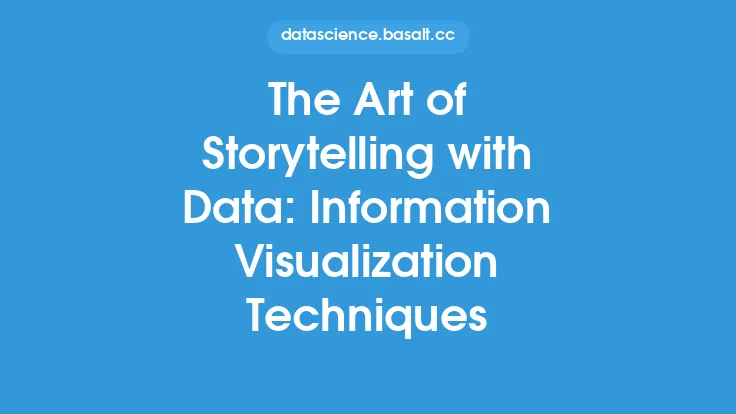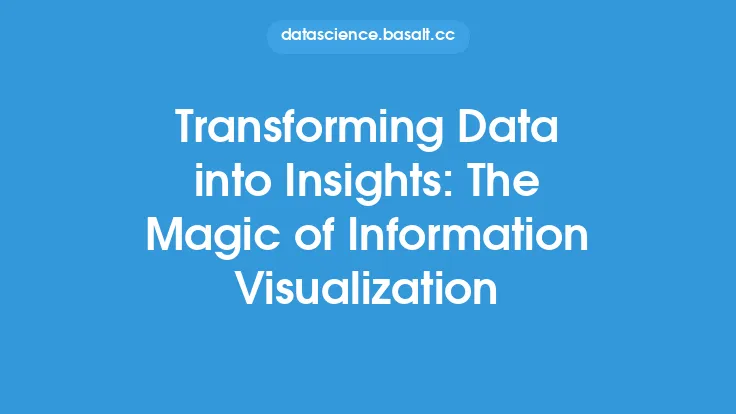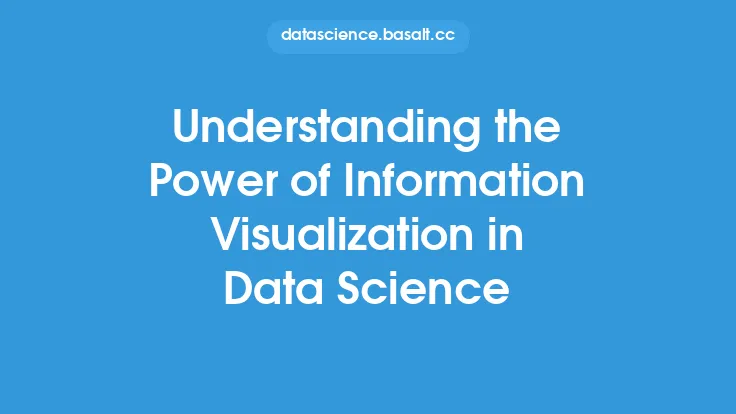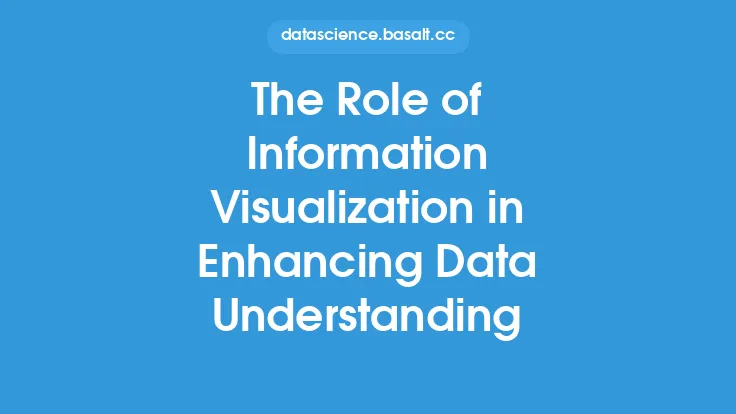The ability to effectively communicate complex data insights is a crucial aspect of data analysis, and information visualization plays a vital role in this process. By leveraging visual representations of data, individuals can quickly identify patterns, trends, and correlations that might be difficult to discern from raw data alone. This, in turn, enables the extraction of meaningful knowledge from data, facilitating informed decision-making and driving business success.
Introduction to Information Visualization
Information visualization is a subset of data visualization that focuses on the use of interactive and dynamic visual representations to facilitate the understanding of complex data. It involves the application of various visualization techniques, such as charts, graphs, and maps, to communicate data insights and support data-driven decision-making. The primary goal of information visualization is to provide a clear and concise visual representation of data, enabling users to quickly identify key trends, patterns, and relationships.
Key Components of Information Visualization
Effective information visualization relies on several key components, including data quality, visualization techniques, and user interaction. High-quality data is essential for creating accurate and reliable visualizations, while visualization techniques, such as color, size, and position, are used to encode data attributes and facilitate visual analysis. User interaction, including zooming, filtering, and hovering, enables users to explore data in greater detail and extract meaningful insights.
Visualization Techniques
A range of visualization techniques are used in information visualization, each with its own strengths and weaknesses. Common techniques include:
- Scatter plots: used to visualize the relationship between two continuous variables
- Bar charts: used to compare categorical data across different groups
- Line charts: used to show trends over time
- Heat maps: used to visualize complex data relationships and patterns
- Tree maps: used to display hierarchical data structures
- Network diagrams: used to visualize complex relationships and interactions
Data Preparation and Processing
Before creating visualizations, data must be prepared and processed to ensure it is accurate, complete, and consistent. This involves data cleaning, transformation, and aggregation, as well as handling missing values and data quality issues. Data processing techniques, such as data mining and machine learning, can also be used to extract insights and patterns from large datasets.
Interactive and Dynamic Visualizations
Interactive and dynamic visualizations are a key aspect of information visualization, enabling users to explore data in greater detail and extract meaningful insights. Techniques, such as zooming, filtering, and hovering, allow users to interact with visualizations and drill down into specific data points. Dynamic visualizations, such as animations and simulations, can also be used to show how data changes over time or in response to different scenarios.
Best Practices for Effective Information Visualization
To create effective information visualizations, several best practices should be followed, including:
- Keep it simple: avoid clutter and focus on key insights
- Use color effectively: use color to encode data attributes and facilitate visual analysis
- Provide context: include relevant context, such as labels and legends, to support understanding
- Enable interaction: provide interactive features, such as zooming and filtering, to facilitate exploration
- Test and refine: test visualizations with users and refine them based on feedback
Tools and Technologies
A range of tools and technologies are available to support information visualization, including:
- Tableau: a commercial data visualization platform
- Power BI: a business analytics service by Microsoft
- D3.js: a JavaScript library for producing dynamic, interactive data visualizations
- Matplotlib: a Python plotting library
- Seaborn: a Python data visualization library based on Matplotlib
Applications and Use Cases
Information visualization has a wide range of applications and use cases, including:
- Business intelligence: supporting data-driven decision-making and strategic planning
- Scientific research: facilitating the analysis and interpretation of complex data
- Education: supporting student learning and understanding of complex concepts
- Healthcare: improving patient outcomes and supporting medical research
- Finance: supporting investment decisions and risk management
Future Directions
The field of information visualization is constantly evolving, with new techniques, tools, and technologies emerging all the time. Future directions include:
- Increased use of AI and machine learning: to support automated visualization and insight generation
- Greater emphasis on storytelling: to facilitate the communication of complex data insights
- More interactive and immersive visualizations: to support deeper engagement and understanding
- Greater focus on data quality and integrity: to ensure accurate and reliable visualizations
- Increased adoption of information visualization: across a wide range of industries and applications.





